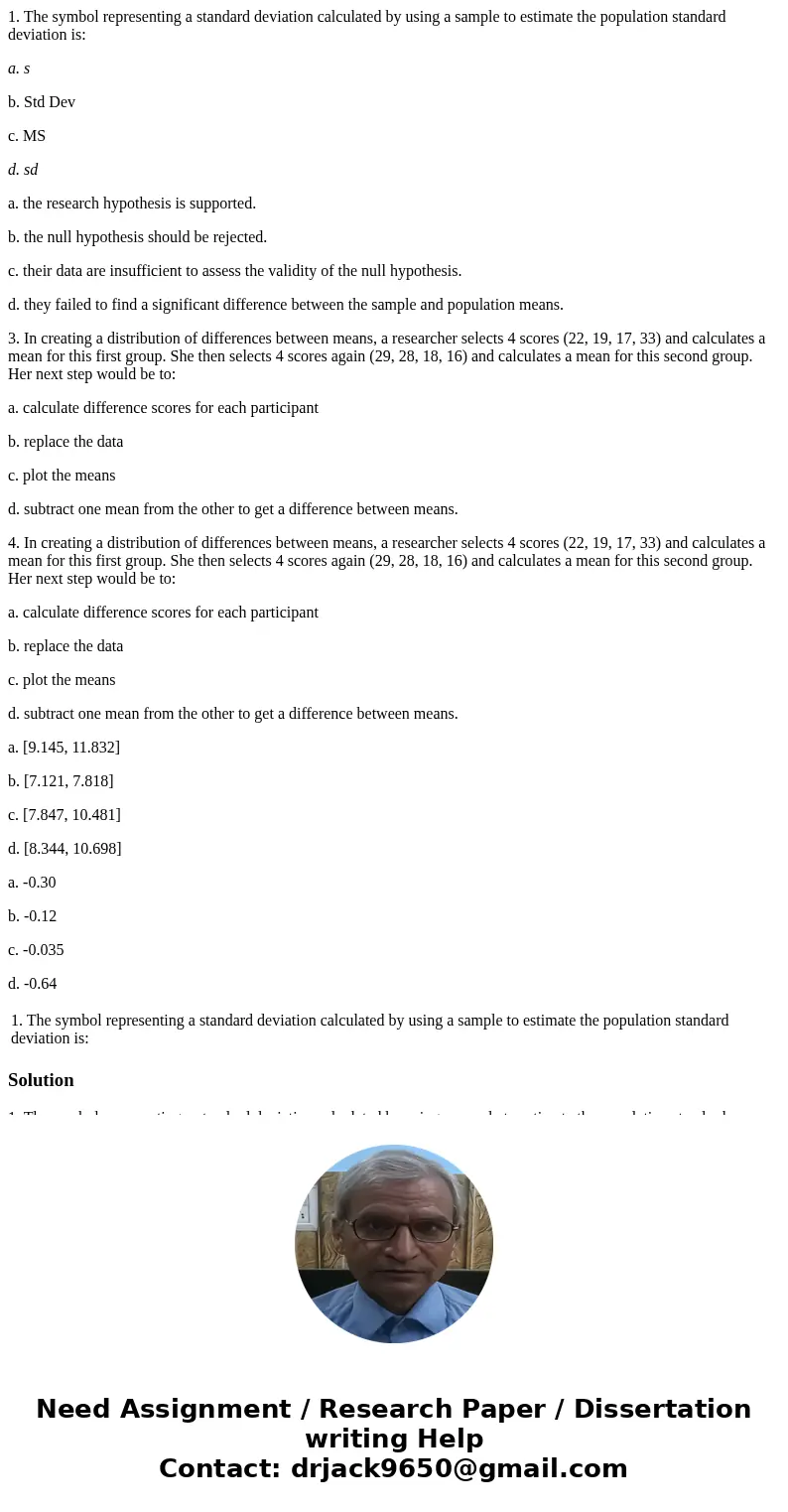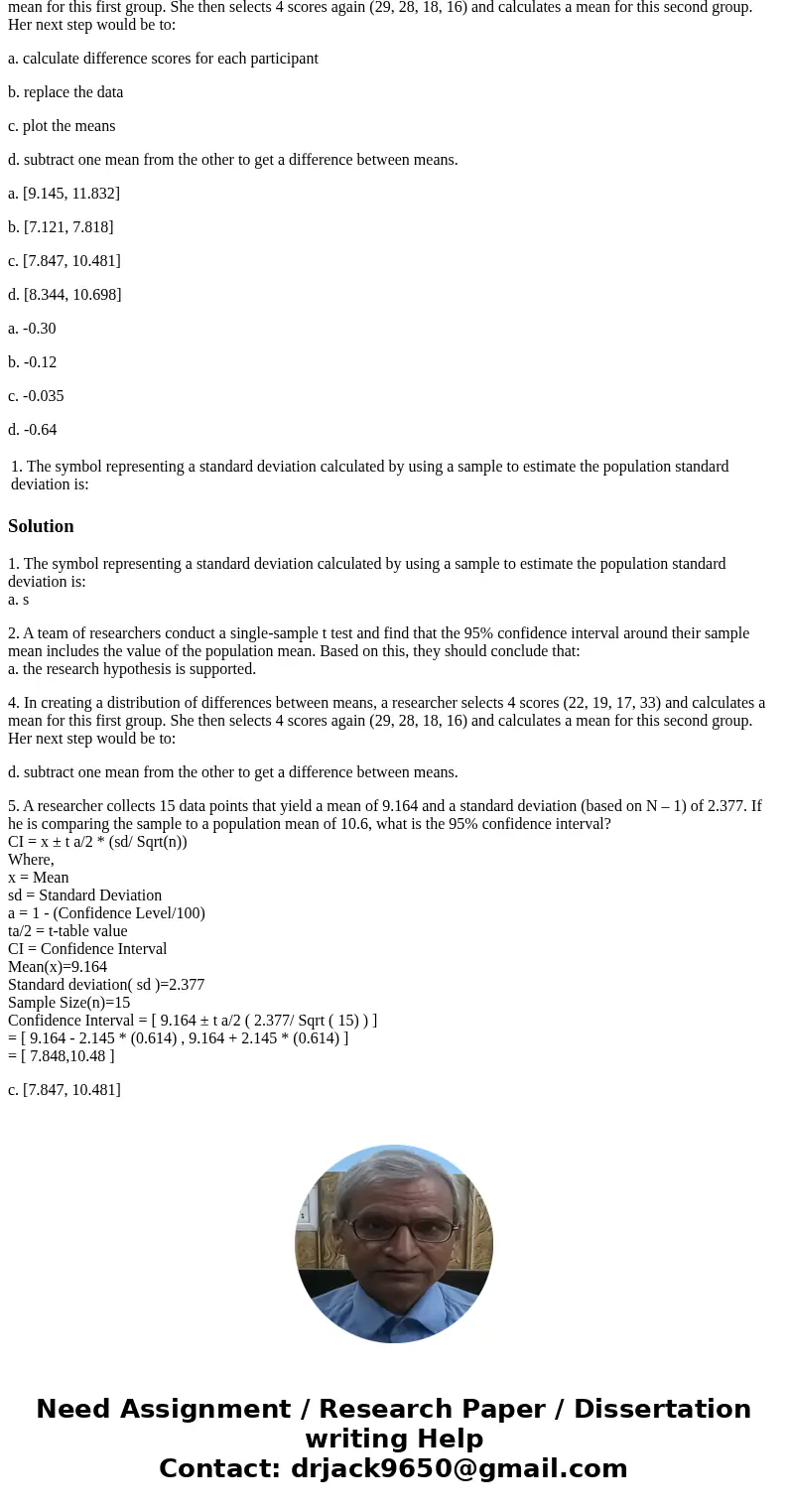1 The symbol representing a standard deviation calculated by
1. The symbol representing a standard deviation calculated by using a sample to estimate the population standard deviation is:
a. s
b. Std Dev
c. MS
d. sd
a. the research hypothesis is supported.
b. the null hypothesis should be rejected.
c. their data are insufficient to assess the validity of the null hypothesis.
d. they failed to find a significant difference between the sample and population means.
3. In creating a distribution of differences between means, a researcher selects 4 scores (22, 19, 17, 33) and calculates a mean for this first group. She then selects 4 scores again (29, 28, 18, 16) and calculates a mean for this second group. Her next step would be to:
a. calculate difference scores for each participant
b. replace the data
c. plot the means
d. subtract one mean from the other to get a difference between means.
4. In creating a distribution of differences between means, a researcher selects 4 scores (22, 19, 17, 33) and calculates a mean for this first group. She then selects 4 scores again (29, 28, 18, 16) and calculates a mean for this second group. Her next step would be to:
a. calculate difference scores for each participant
b. replace the data
c. plot the means
d. subtract one mean from the other to get a difference between means.
a. [9.145, 11.832]
b. [7.121, 7.818]
c. [7.847, 10.481]
d. [8.344, 10.698]
a. -0.30
b. -0.12
c. -0.035
d. -0.64
| 1. The symbol representing a standard deviation calculated by using a sample to estimate the population standard deviation is: |
Solution
1. The symbol representing a standard deviation calculated by using a sample to estimate the population standard deviation is:
a. s
2. A team of researchers conduct a single-sample t test and find that the 95% confidence interval around their sample mean includes the value of the population mean. Based on this, they should conclude that:
a. the research hypothesis is supported.
4. In creating a distribution of differences between means, a researcher selects 4 scores (22, 19, 17, 33) and calculates a mean for this first group. She then selects 4 scores again (29, 28, 18, 16) and calculates a mean for this second group. Her next step would be to:
d. subtract one mean from the other to get a difference between means.
5. A researcher collects 15 data points that yield a mean of 9.164 and a standard deviation (based on N – 1) of 2.377. If he is comparing the sample to a population mean of 10.6, what is the 95% confidence interval?
CI = x ± t a/2 * (sd/ Sqrt(n))
Where,
x = Mean
sd = Standard Deviation
a = 1 - (Confidence Level/100)
ta/2 = t-table value
CI = Confidence Interval
Mean(x)=9.164
Standard deviation( sd )=2.377
Sample Size(n)=15
Confidence Interval = [ 9.164 ± t a/2 ( 2.377/ Sqrt ( 15) ) ]
= [ 9.164 - 2.145 * (0.614) , 9.164 + 2.145 * (0.614) ]
= [ 7.848,10.48 ]
c. [7.847, 10.481]


 Homework Sourse
Homework Sourse